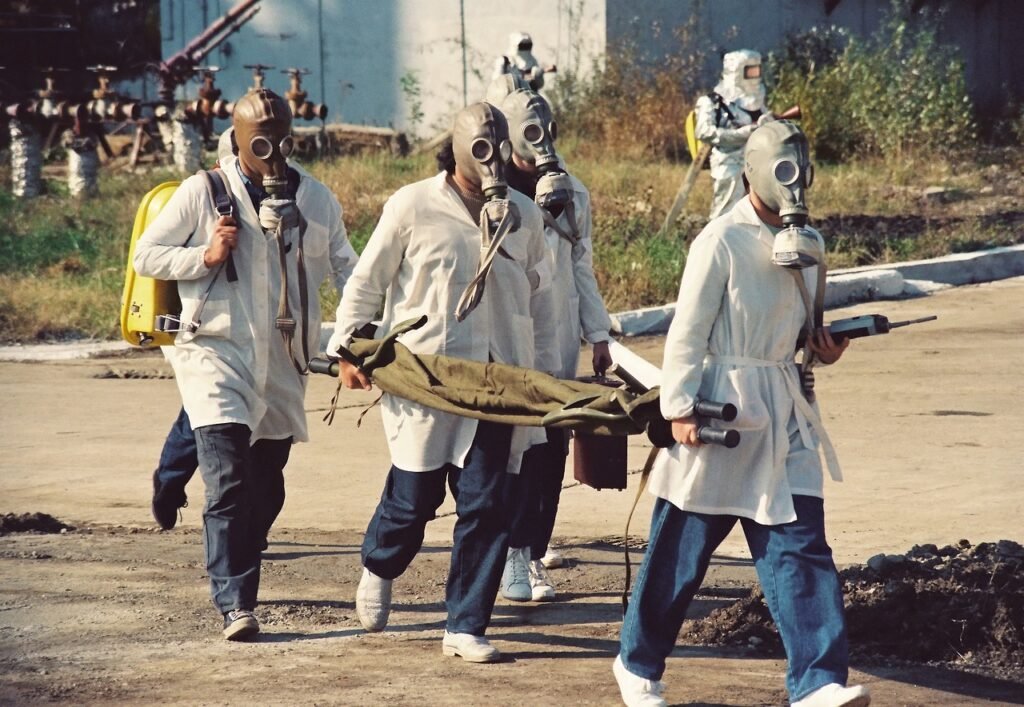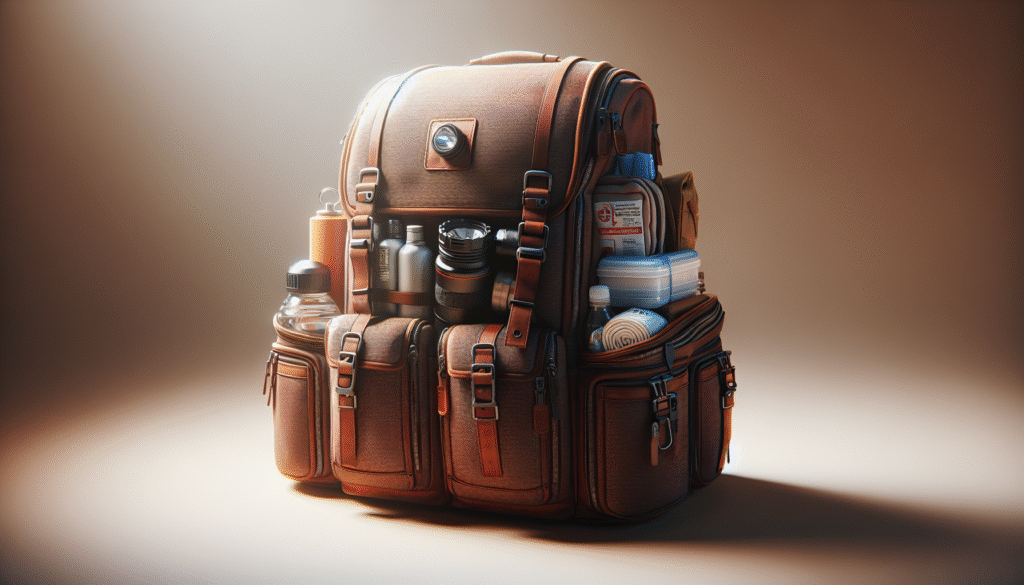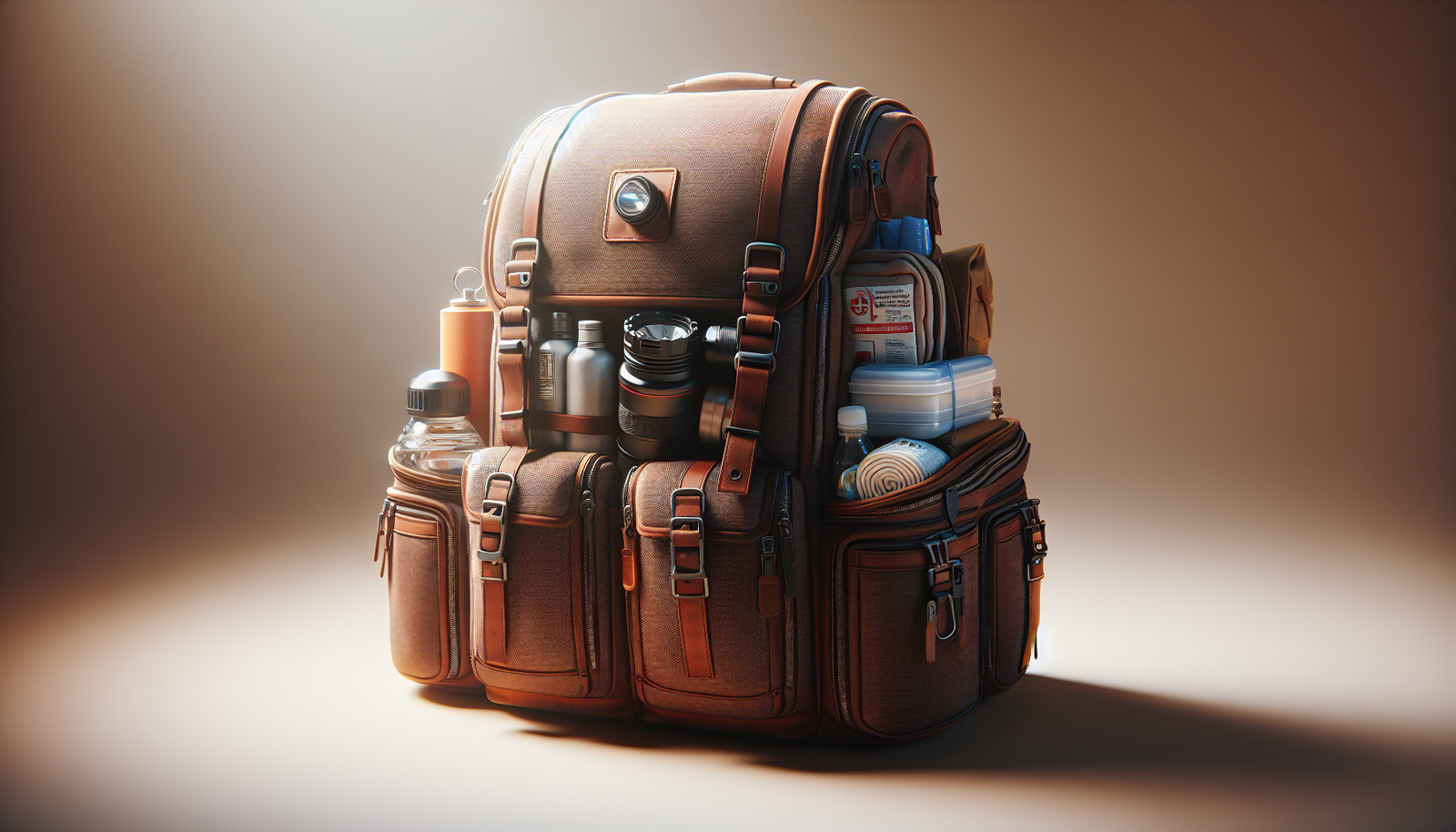?Are you confident that your family would know what to do the moment an emergency strikes?
What Is The Best Way To Create A Family Emergency Plan?
Creating the best family emergency plan starts with clear thinking, realistic preparation, and regular practice. If you follow a structured approach, you’ll reduce panic, speed up responses, and increase safety for everyone in your household.
Why You Need a Family Emergency Plan
Having a plan gives you direction when seconds count, and it helps everyone understand their role during an emergency. You’ll avoid confusion and wasted time when responsibilities are already assigned and practiced.

This image is property of pixabay.com.
Start by Assessing Risks in Your Area
Begin by identifying the types of emergencies most likely to affect your home, such as hurricanes, earthquakes, floods, wildfires, severe storms, or power outages. You should also consider human-caused hazards, like chemical spills, utility failures, or neighborhood incidents.
Identify Local Hazards
Check local hazard maps, weather patterns, and recent disaster history to pinpoint risks. You can contact local emergency management offices or use government websites for up-to-date information about typical threats in your region.
Assess Household Vulnerabilities
Think about the people, pets, and property that may need special attention during an emergency. You should list mobility limitations, medical needs, language barriers, and essential equipment that requires power or special handling.
Create a Clear Communication Plan
If family members become separated, communication is essential to reunite safely. Your plan should include primary and backup ways to communicate and a designated out-of-area contact to act as a central point of information.
Choose Contacts and Communication Methods
Designate one out-of-area contact and list local emergency numbers, neighborhood contacts, and workplace or school emergency procedures. You should add multiple ways to reach people, such as phone calls, text messages, and social media checkpoints.
Emergency Contact Table
Use a simple table to keep important contact information accessible. Print copies and store digital versions in your devices and cloud storage so you can access them even if you lose power.
| Contact Role | Name | Phone(s) | Notes | |
|---|---|---|---|---|
| Primary Contact (Out-of-Area) | Use as central check-in | |||
| Local Emergency Services | Police/Fire/EMS | 911 or local number | Local emergency number if different | |
| Family Member 1 | ||||
| Family Member 2 | ||||
| Child’s School | Include school hotline info | |||
| Workplace | Include alternate route or shelter policy | |||
| Neighbor | Check if neighbor can assist |

This image is property of pixabay.com.
Designate Meeting Places
Decide on at least two meeting places: one near your home and one outside your neighborhood. This ensures you have a location to regroup if you must evacuate or if you cannot return home.
Local and Out-of-Area Meeting Spots
Your local meeting spot should be familiar and easily accessible, like a neighbor’s driveway, a nearby park entrance, or a school yard. The out-of-neighborhood meeting spot might be a library, community center, or the home of a family friend in another part of town.
Meeting Places Table
Record meeting places with purpose and directions so everyone can reach them even under stress.
| Meeting Place | Address/Location | Purpose | Who Should Go There |
|---|---|---|---|
| Near-home spot | Short-term regroup | Everyone who can safely reach it | |
| Neighborhood assembly | Temporary shelter | If local authorities set it up | |
| Out-of-neighborhood spot | Longer-term regroup | If evacuation is required | |
| Evacuation shelter | Official shelter location | Follow local guidance |
Plan for Evacuation
Evacuating requires routes, transportation arrangements, and plans for pets and vulnerable family members. You should map several routes and know where to get current evacuation orders and shelter info.
Evacuation Routes and Transportation
Identify primary and secondary evacuation routes and keep a map or offline GPS stored on your phone. You should ensure vehicles are regularly serviced and have emergency kits in them; if you don’t have a vehicle, plan who can drive or how you will get transportation.
Pet and Special Needs Evacuation
Include pet carriers, leashes, vaccination records, and pet food in your plan so your animals aren’t left behind. For family members with special needs, arrange transportation that accommodates mobility devices, oxygen tanks, or other equipment.

This image is property of pixabay.com.
Plan to Shelter in Place
Sometimes staying at home is safer than leaving. You’ll need supplies, a plan for securing your home, and knowledge on how to seal the house if required.
When to Shelter in Place
Follow official guidance for shelter-in-place orders, which are common during chemical releases, active shooter incidents nearby, or severe storms. You should know how to shut off ventilation, seal windows and doors, and move to an interior room if instructed.
Supplies for Shelter-in-Place
Keep a readily accessible kit with water, food, medical supplies, flashlights, batteries, and a radio. You should have enough for at least 72 hours and longer if you live in an area that might be cut off after an event.
Build an Emergency Supply Kit
A well-stocked emergency kit is one of the most practical parts of your plan, reducing stress and making it easier to act during an emergency. Keep kits in multiple locations: home, car, and workplace.
Essential Emergency Kit Items
Your basic kit should include water, nonperishable food, first aid supplies, flashlights, batteries, a multi-tool, personal hygiene items, and copies of important documents. You should also include items specific to your family’s medical and comfort needs.
Emergency Kit Checklist Table
Use this table as a starting point and adapt it to your circumstances. Quantities may vary depending on family size and types of emergencies common in your area.
| Category | Item | Suggested Quantity/Notes |
|---|---|---|
| Water | Bottled water | 1 gallon per person per day for 3 days (minimum) |
| Food | Nonperishable food | 3-day supply for each person (7–14 days ideal) |
| Medications | Prescription meds | 7–14 day supply plus copies of prescriptions |
| First Aid | First aid kit | Bandages, antiseptic, pain relievers, gloves |
| Light/Power | Flashlights & batteries | One per person, extra batteries |
| Communication | Battery-powered/hand-crank radio | NOAA-capable recommended |
| Tools | Multi-tool, wrench, duct tape | For minor repairs and turning off utilities |
| Hygiene | Sanitation supplies | Toilet paper, wipes, hand sanitizer |
| Documents | Copies of IDs & insurance | Keep digital encrypted copies too |
| Clothing | Warm clothes & blankets | Consider weather and season |
| Baby/Child | Formula, diapers, supplies | If applicable |
| Pet | Food, meds, leash, carrier | If applicable |
| Comfort | Cash, games, chargers | Small bills and USB power bank |

Keep Important Documents Safe
Your plan should list what documents are critical and how you will store them so they are accessible even after damage. Make both physical and digital copies and protect sensitive files with passwords.
What to Keep and Where
Store originals in a fireproof and waterproof safe if possible, and keep digital copies in encrypted cloud storage and on a USB drive stored in a secure place. You should include IDs, birth certificates, insurance policies, medical records, and property deeds.
Assign Roles and Responsibilities
When everyone knows what to do, actions happen faster and with less confusion. Assign roles for communication, grabbing the emergency kit, shutting off utilities, tending to children or pets, and documenting damages.
Family Roles Table
Clearly mapped roles help during the stress of an emergency. Rotate roles during practice sessions so everyone learns multiple tasks.
| Role | Primary Tasks | Backup Person |
|---|---|---|
| Plan Leader | Makes major decisions, contacts emergency services | |
| Communications | Notifies contact list, updates out-of-area contact | |
| Grab-and-Go Kit | Ensures kit is ready and accessible | |
| Evacuation Route Lead | Guides family on chosen route | |
| Pet Care | Prepares pets with carriers & supplies | |
| Medical Lead | Manages meds, first aid, and medical gear |

Consider Special Needs for Family Members
If someone depends on medical devices, therapy, or specific medications, your plan should address continuity of care and power needs. You should also account for infants, older adults, and people with disabilities.
Medical and Mobility Considerations
List all medications with dosages and physicians’ contact information. You should include backup power for critical devices and identify alternate caregivers or transportation that can handle mobility devices.
Plan for Children and Schools
Understand and integrate school emergency procedures into your family’s plan, and teach your children your customized plan in age-appropriate ways. You should also make sure caregivers and babysitters know the plan.
School and Childcare Coordination
You must register emergency contact information with schools and ask about reunification procedures, sheltering policies, and communication methods. Keep a duplicate set of keys and any authorization forms needed for alternative pickup.
Practice Regularly and Update the Plan
A plan only works if everyone understands it and has practiced it. Schedule drills and reviews at least twice a year, and update the plan when your family circumstances change.
Drills and Review Schedule
Practice different scenarios such as fire, earthquake, or sudden evacuation so everyone knows what to do in multiple situations. You should evaluate each drill and note improvements, then revise the written plan accordingly.
Use Technology and Alerts Effectively
Your phone and internet can provide real-time warnings, maps, and instructions from authorities. Use official apps and local alert systems, but plan for offline options if connectivity fails.
Recommended Tools and Tips
Download official emergency alert apps, save offline maps and contacts, and maintain a battery bank for charging. You should set your phone to display emergency contacts even when locked, and know how to enable emergency mode to conserve battery.
During Specific Emergencies: Practical Steps
Each type of emergency requires specific actions, and knowing those steps saves time. You should tailor parts of your plan to common local threats.
Fire
If you smell smoke or see fire, you should get everyone out immediately and call emergency services from a safe location. Practice two escape routes from each room and agree on a meeting place outside.
Earthquake
Drop, cover, and hold on until shaking stops, then check for injuries and hazards like gas leaks. You should evacuate only if local authorities advise or if your home is unsafe.
Flood
Move to higher ground and avoid walking or driving through floodwaters. You should have an elevated place to store important items and a plan to evacuate early if flooding is predicted.
Severe Weather (Storms, Tornadoes, Hurricanes)
Follow official warnings and move to designated shelters or interior rooms without windows for tornadoes. For hurricanes, evacuate when ordered and secure your home beforehand if time allows.
Hazardous Material Incidents
If a chemical release is in your area, follow shelter-in-place instructions—close windows, turn off HVAC systems, and seal gaps. You should stay tuned to official alerts for when it’s safe to leave.
After an Emergency: Reunification and Recovery
Once immediate danger passes, your focus shifts to safety, reunification, documentation, and recovery. You should have a plan for how to reconnect, assess damage, and begin repairs.
Reunification and Accountability
Use your out-of-area contact and meeting places to account for everyone. You should inform family and friends about your status and any change in plans or location.
Documenting Damage and Insurance
Take photos and notes for insurance claims and contact your insurance company early to start the claims process. You should keep receipts for expenses incurred during recovery for reimbursement.
Financial and Legal Preparations
Financial readiness improves resilience after an emergency. You should have emergency cash, updated insurance coverage, and knowledge of benefit or aid options.
Money, Insurance, and Records
Keep a small amount of cash in small bills in your emergency kit and store copies of insurance policies and account numbers in digital and physical forms. You should also know how to contact your bank and credit card companies after service interruptions.
Build Neighborhood and Community Connections
Neighborhood support can be a force multiplier in emergencies, providing skills, equipment, and collective resources. You should know neighbors’ abilities and create reciprocal plans for assistance.
How to Organize Community Support
Start a neighborhood contact list and share preparedness tips. You should identify neighbors with medical training, tools, or special equipment and establish a simple system for checking on vulnerable neighbors during events.
Legal Permissions and Caregiving Plans
If you rely on non-parent caregivers, create documented permissions for medical care and childcare. You should prepare notarized authorizations and emergency contact letters for schools, babysitters, and medical providers.
Power of Attorney and Medical Directives
Consider having durable power of attorney and advance medical directives in place for adults with health vulnerabilities. You should discuss these decisions with loved ones and keep copies accessible.
Frequently Asked Questions (FAQ)
Answer common concerns to help you feel more confident about building and using a family emergency plan. You should review and adapt these answers to your specific circumstances.
How often should I update the plan?
Update your plan at least twice a year and whenever there are major life changes such as a move, addition of a family member, or new medical needs. You should also review it after any drill or actual emergency.
What if I can’t keep paper documents safe?
Use encrypted cloud storage and multiple digital backups on USB drives kept in secure locations. You should also share copies with a trusted out-of-area contact.
How do I prepare children without scaring them?
Teach safety steps in calm, age-appropriate terms and focus on practical actions and reassurances. You should make drills fun and empowering so kids feel capable rather than frightened.
Sample Family Emergency Plan Template
Below is a concise template to fill out and store where everyone can access it. You should tailor this to your household’s needs and update it regularly.
| Section | Details to Fill In |
|---|---|
| Primary Contact (Out-of-Area) | Name, phone, email |
| Local Emergency Contacts | Police, fire, poison control, school |
| Meeting Places | Near-home meeting, neighborhood, out-of-town |
| Evacuation Routes | Primary route, alternate route, transportation |
| Shelter-In-Place Location | Interior room, supplies needed |
| Emergency Kit Location(s) | Home, car, workplace |
| Important Documents | IDs, insurance, medical records, storage location |
| Medical Needs | Medications, dosages, physician contacts |
| Pets | Microchip number, vet, supplies location |
| Roles | Plan leader, communications, kit manager, pet caregiver |
| Drill Schedule | Dates for practice, notes from last drill |
Final Tips to Make Your Plan Work
Start small and build momentum; you don’t need to finish everything in a day. You should make incremental updates, involve children, and store copies in multiple formats so the plan remains living and useful.
Prioritization and Time Management
Focus first on the highest-impact items: communication, emergency kit, and meeting places. You should then layer in documentation, special needs planning, and community coordination.
Keep It Simple and Practical
A plan is most effective when it’s clear, brief, and easy to follow under stress. You should avoid overcomplicating procedures; concise instructions are easier to remember and execute.
Encouragement to Act Now
Putting a plan in place today will give you peace of mind and a practical roadmap for protecting your loved ones. You should set a concrete date to complete the initial plan and schedule the first family drill soon after.
Resources to Help You Build the Plan
Consult trusted local and national emergency management resources for templates, checklists, and guidance tailored to your region. You should bookmark official sites and download recommended apps that send localized alerts.
Useful Resource Types
Look for local emergency management websites, national agencies’ preparedness guides, school and workplace emergency plans, and community groups that run readiness workshops. You should also keep printed materials for quick reference if technology fails.
By following these steps, customizing them to your family’s needs, and practicing regularly, you’ll create a family emergency plan that’s practical, reliable, and easy to use under pressure. You can reduce confusion, protect vulnerable family members, and improve outcomes whenever disaster strikes. Start now, take it one step at a time, and check your plan often so it remains accurate and effective.

